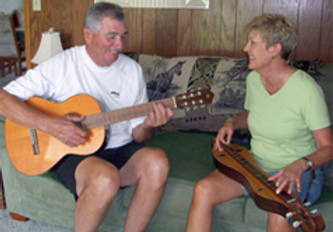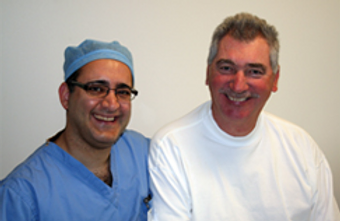Reviews & Testimonials
Dr. Oliver Ghalambors reviews
Trustindex verifies that the original source of the review is Google. Everyone is really great and professional. So happy I found this place. They are really helping to make my back problems better.Trustindex verifies that the original source of the review is Google. From the gals at the front to the doctor they make you feel appreciated and genuinely want to make your life pain free. Simply the best.Trustindex verifies that the original source of the review is Google. The BEST DOCTER Dr.G and the staff is amazingTrustindex verifies that the original source of the review is Google. Extremely professional and very kind. Let you what they will be doing and what your recovery time will be. Wouldn’t go anywhere else.Trustindex verifies that the original source of the review is Google. I would recommend this place for back pain n knee pain.Trustindex verifies that the original source of the review is Google. Amazing doctors and I like the fact that they are very personable and very knowledgeable as well. I love Dr G. I will recommend him hundred percentTrustindex verifies that the original source of the review is Google. Dr G and his staff are so warm and inviting while maintaining an unmatched professionalism. I highly recommend!Trustindex verifies that the original source of the review is Google. I love doctor G! He is so sweet and caring. He attends to me very well and wish he was on my personal friends and family! I love the staff as well, personal connections and they are funny and kind. Most importantly my health and spinal function is improving thanks to the plans of the team. Love you all!Trustindex verifies that the original source of the review is Google. The whole team is very friendly and Dr G is so accommodating and eludes genuine concern for your issues.Load more
Patient Testimonials

Immediately following the accident, he was paralyzed from the neck down and hospitalized at St. Louis University Hospital. In time, he was able to regain feeling below his neck, but still had a long road ahead of him. After a month in the spinal cord injury wing at St. Mary’s Rehabilitation Center (now SSM Rehabilitation Hospital), he was able to return to his home in Effingham and do his rehabilitation as an outpatient at St. Anthony’s. He received physical therapy to improve his walking and occupational therapy to help him learn how to use his hands and fingers again.
Marvel has nothing but praise for how St. Anthony’s Physical Rehabilitation staff cared for him as he slowly improved. “For about a year, I came to therapy about three times a week, so you really get to know each other. They really cared about me and helped me recover from the accident,” he said about St. Anthony’s Physical Rehab staff.
Although he was grateful to overcome the paralysis, the accident left Marvel with painful conditions that debilitated him for 16 years. “Ever since the night of the accident, I have had really bad spasms. Even when I was completely paralyzed, my body would be jumping all over the place,” he shared. “It would cause me to pull my groin muscle over and over again.”
He also suffered from five different trigger points in his left shoulder blade that would cause him great discomfort. “It felt like I had a Charley Horse (severe muscular cramps) in my shoulder all the time,” he explained. He went to many doctors and therapists to try to relieve his shoulder pain, but while they sometimes were able to relive his pain on a temporary basis, nothing completely removed his pain, or lasted any longer than a day or two. He also developed a problem with his ability to extend his hand, arm or leg. “Whenever I would sneeze or yawn, my hand would spasm. I wasn’t able to make a fist and open it. I wasn’t able to kick or cross my legs,” he said.
The pain affected Marvel’s lifestyle and independence. “I was afraid to drive because if I would start to spasm or the pain got unbearable, I would have to pull over until the spasm passed or the pain subsided enough that I could continue,” he shared. “The pain took a lot of my life away from me.
After seeing doctor after doctor over the years to little or no progress, Marvel lost almost all hope of living a pain-free life ever again. He had almost given up completely when he decided to ask his daughter Jeno for some advice. She works for Kimberly-Clark Corporation in Atlanta, Georgia and had some connections who knew some of the best pain management specialists. He was pleasantly surprised to learn that one of the physicians her contacts recommended as one of the best in the nation was right in his back yard, Oliver Ghalambor, M.D., D.A.B.A., F.I.P.P., D.A.B.I.P.P.

He also suffered from five different trigger points in his left shoulder blade that would cause him great discomfort. “It felt like I had a Charley Horse (severe muscular cramps) in my shoulder all the time,” he explained. He went to many doctors and therapists to try to relieve his shoulder pain, but while they sometimes were able to relive his pain on a temporary basis, nothing completely removed his pain, or lasted any longer than a day or two. He also developed a problem with his ability to extend his hand, arm or leg. “Whenever I would sneeze or yawn, my hand would spasm. I wasn’t able to make a fist and open it. I wasn’t able to kick or cross my legs,” he said.
The pain affected Marvel’s lifestyle and independence. “I was afraid to drive because if I would start to spasm or the pain got unbearable, I would have to pull over until the spasm passed or the pain subsided enough that I could continue,” he shared. “The pain took a lot of my life away from me.”
After seeing doctor after doctor over the years to little or no progress, Marvel lost almost all hope of living a pain-free life ever again. He had almost given up completely when he decided to ask his daughter Jeno for some advice. She works for Kimberly-Clark Corporation in Atlanta, Georgia and had some connections who knew some of the best pain management specialists. He was pleasantly surprised to learn that one of the physicians her contacts recommended as one of the best in the nation was right in his back yard, Oliver Ghalambor, M.D., D.A.B.A., F.I.P.P., D.A.B.I.P.P.
Dr. Ghalambor had recently moved to Effingham and opened the Center for Interventional Pain Management at St. Anthony’s. Dr. Ghalambor explained what he discovered after meeting Marvel. “I explained to him that although he thought the pain he was experiencing in his leg was coming from his spinal cord injury, after examining him, I felt it was simply coming from his hip,” he said. Dr. Ghalambor did an X-ray guided hip injection, and as Marvel explained, “It was the first time in 16 years I could walk without pain.”
These shots usually provide temporary pain relief, but as they wear off, additional shots provide longer pain coverage. In combination with anti-inflammatory and anti-spasmodic medications, Marvel is able to walk and drive again without fear.
After handling his leg pain, Dr. Ghalambor focused on providing Marvel pain relief in his shoulder blade. Again, Dr. Ghalambor thought Marvel’s pain symptoms were misdirected. Rather than coming from his shoulder blade, Dr. Ghalambor focused on his neck. Dr. Ghalambor tested his theory by doing a diagnostic block of the pain fibers coming from the neck joints, called “cervical facet medial branch block.” This is a highly sophisticated operation during which small pain fibers of the neck joints are temporary anesthetized under X-ray guidance. Pain relief after this procedure confirms that the pain is in fact coming from these joints. Once the diagnosis has been established, the treatment entails permanently inactivating these pain fibers for long-term relief.
Dr. Ghalambor explained the procedure. “There are nerves that carry pain signals from the joints of the spine called medial branches. These small nerves have no other function. Therefore, in chronic pain conditions that are unresponsive to less invasive treatments, all we have to do is to inactivate these nerves. The technique is called radiofrequency lesioning of the medial branches. In the radiofrequency procedure, after anesthetizing the area, a small needle is inserted to the medial branch nerve site under X-ray guidance. A radiofrequency electrode is then inserted through the needle and after testing to assure correct placement, the electrode heats and cauterizes the nerve,” Dr. Ghalambor said. “This disrupts the nerve’s ability to communicate with the brain, blocking the pain signals from the joints.”
Dr. Ghalambor’s procedure on Marvel was a huge success, in more ways than one. His shoulder felt better than it has in years. While the pain had not completely subsided, Dr. Ghalambor started with the least invasive-procedure and can do additional procedures to provide more relief. Marvel not only had relief from his shoulder pain, but the procedure also corrected his inability to extend his hand, arm and leg. “When I was in my room after the procedure, I yawned and my hand didn’t spasm. I realized I was able to open my hand and move my arm and kick. I just started crying,” Marvel shared. When Dr. Ghalambor met him after surgery, he explained to Marvel that the radiofrequency procedure was not meant to correct that. “Dr. Ghalambor explained that sometimes a major pain generator in the body makes other parts and muscles go into spasm and become painful as well. Once the primary pain generator has been addressed, the others would automatically resolve. I was just so grateful it happened for me,” Marvel said.
Marvel continues to see Dr. Ghalambor on a regular basis. The shots for his hip continue to offer increasingly more pain relief and the radiofrequency has offered him more relief than he has experienced in a long time. Marvel cannot thank Dr. Ghalambor enough for what he has done for him. “After 16 years living in almost constant pain, I had lost all hope that I would ever have my normal, active, pain-free life back again,” Marvel shared. “But Dr. Ghalambor gave me back my hope and I will forever be grateful to him.”

Patient Testimonials
Four-year-old Lucas Wilson plays with his mother Heather. Prior to having a spinal cord stimulation procedure at St. Anthony’s Memorial Hospital’s Center for Interventional Pain Management, Heather could sometimes barely walk, let alone play with her son. Now, Lucas says he has his “fun” mom back.
Imagine back pain so severe that you couldn’t walk through a store, rise from a chair without help or play with your 4-year-old son. For more than two years, this was everyday life for Heather Wilson of Yale.
For about two years, my back pain was extremely limiting and affected my regular lifestyle,” Wilson says. “Everyday activities were very painful for me. I can remember several instances when grocery shopping where my back would lock up and I couldn’t take a single step. I’d just have to stand in the aisle, frozen in place.”
She sought the help of numerous specialists, including a neurologist, to cope with the pain. Every turn seemed to present a new obstacle and offered no relief. She even had specialists tell her that, unfortunately, there was nothing more they could do for her and she’d simply have to live with her pain. Finding these conclusions unacceptable, Wilson continued her search for help.
Not Giving Up
Finally, her primary care physician, George Saliba, MD, recommended she seek the help of the Center for Interventional Pain Management at St. Anthony’s. Under the care of Oliver Ghalambor, MD, DABA, FIPP, DABIPP, interventional pain management physician at the Center, Wilson explored a number of different treatment modalities to find relief, including pain medications, epidural steroid injections and radiofrequency procedures. Like her previous treatments, however, each eventually lost its effectiveness.
“I remember after my last radiofrequency treatment, I went to Dr. Ghalambor and told him it just wasn’t working anymore,” Wilson says. “He wouldn’t accept the continuation of my pain either and said that he had one more thing we could try, but that it was pretty radical, so if I was up for it, we’d do a trial run first.”
The radical procedure Dr. Ghalambor had in mind is called spinal cord stimulation, a surgical method that uses electrical impulses to interrupt and prevent pain signals before they are received by the brain.
“The concept of spinal cord stimulation is similar to that of a mother rubbing a child’s head after he or she hurts it,” Dr. Ghalambor says. “The rubbing sensation distracts the child from the pain. Through spinal cord stimulation, we’re recreating that type of sensation with electrical impulses to help decrease the amount of pain one experiences and change it to more of a tingling feeling. This treatment is generally reserved for patients who have exhausted all other means of pain management.”
Patients eligible for spinal cord stimulation participate in a trial implantation first. The trial consists of implanting insulated wire leads through a small needle into the epidural space surrounding the spinal cord. Electrodes at the ends of the leads produce pulses that stimulate the nerves and block pain signals. Patients provide the physician with feedback to help determine where to place the leads to best block pain. Once this area is identified, a temporary external battery is worn and used for approximately one week to determine if spinal cord stimulation will help relieve pain. If both the patient and physician agree that the amount of pain relief is acceptable during the trial, a permanent system is implanted.
“Spinal cord stimulation has given me my quality of life back and exceeded my expectations,” Wilson says. “I thought I’d be on pain medication forever, but now I’m completely off pain pills and can live again. I would definitely recommend this procedure to others who are suffering and cannot find relief. The entire Center for Interventional Pain Management staff was wonderful. Dr. Ghalambor is one of the most humble physicians I know and is an exceptional person, as well. He said he’d help me, and he did just that.”


